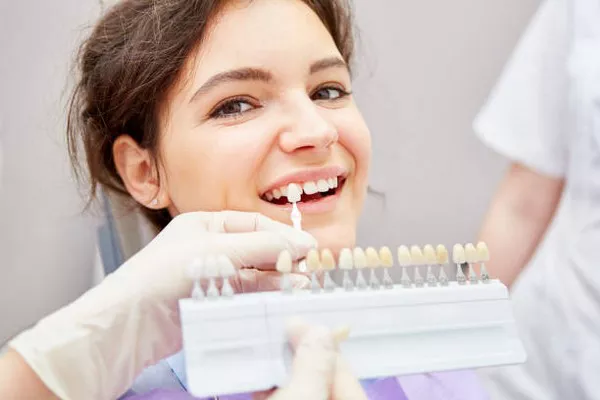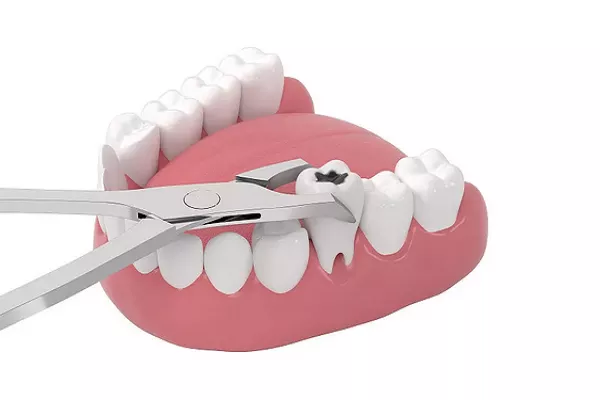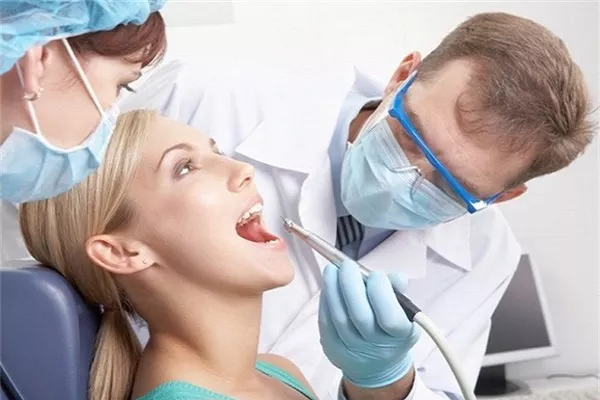Maintaining a bright, white smile is often associated with good oral health and hygiene. However, many individuals may find themselves perplexed by the presence of teeth that appear half white and half yellow. This article aims to delve into the various factors that contribute to tooth discoloration, including the difference between intrinsic and extrinsic discoloration, common causes, prevention tips, treatment options, when to seek professional help, debunking myths, and offering personalized advice.
Explanation of Tooth Discoloration
Tooth discoloration can be broadly categorized into two types: intrinsic and extrinsic.
Intrinsic Discoloration: This type of discoloration occurs when the inner structure of the tooth, known as dentin, darkens or becomes yellowed. Intrinsic discoloration is often caused by factors such as genetics, certain medications (such as tetracycline antibiotics), dental trauma, excessive fluoride exposure during tooth development, or systemic diseases that affect tooth development.
Extrinsic Discoloration: Extrinsic discoloration, on the other hand, affects the outer surface of the tooth, known as enamel. This type of discoloration is typically caused by external factors such as consumption of deeply pigmented foods and beverages (e.g., coffee, tea, red wine), tobacco use (smoking or chewing), poor oral hygiene leading to plaque buildup, certain diseases (e.g., enamel hypoplasia), and aging.
When both intrinsic and extrinsic factors are at play, teeth can exhibit a combination of white and yellow discoloration, resulting in a half-and-half appearance.
Common Causes of Tooth Discoloration
Numerous factors can contribute to tooth discoloration, leading to the distinctive half-white, half-yellow appearance. Some of the most common causes include:
- Foods and Drinks: Dark-colored foods and beverages such as coffee, tea, red wine, and berries can stain the enamel over time, leading to extrinsic discoloration.
- Tobacco Use: Smoking or chewing tobacco products introduces tar and nicotine to the teeth, causing severe extrinsic staining and increasing the risk of gum disease and oral cancer.
- Poor Dental Hygiene: Inadequate brushing, flossing, and regular dental check-ups can allow plaque and tartar to accumulate on the teeth, leading to extrinsic discoloration and eventual tooth decay.
- Diseases: Certain medical conditions and diseases, such as enamel hypoplasia (a condition where enamel formation is incomplete), can cause intrinsic discoloration and affect tooth color.
- Medications: Some medications, particularly tetracycline antibiotics when taken during childhood, can cause intrinsic staining of developing teeth, leading to permanent discoloration.
- Dental Materials: Silver amalgam fillings or metal-based dental restorations can cause a grayish appearance to the teeth, especially if they are visible when smiling.
- Aging: As we age, the enamel on our teeth naturally wears down, revealing the yellowish dentin underneath and contributing to overall tooth discoloration.
- Genetics: Genetic factors can influence the thickness and translucency of enamel, as well as predispose individuals to certain dental conditions that affect tooth color.
- Environment: Exposure to high levels of fluoride in drinking water during childhood or environmental factors such as industrial pollution can lead to intrinsic discoloration of the teeth.
- Trauma: Dental trauma, such as a blow to the mouth or severe grinding of the teeth (bruxism), can damage enamel and dentin, leading to discoloration over time.
Prevention Tips
While some causes of tooth discoloration are beyond our control, there are several preventive measures individuals can take to maintain a bright, white smile:
- Practice Good Oral Hygiene: Brush your teeth at least twice a day, floss daily, and visit your dentist regularly for professional cleanings and check-ups.
- Limit Staining Foods and Beverages: Cut back on consumption of dark-colored foods and drinks that are known to stain teeth, or rinse your mouth with water after consuming them to minimize staining.
- Quit Smoking and Tobacco Use: Quitting smoking and avoiding tobacco products can significantly reduce the risk of extrinsic tooth staining, gum disease, and oral cancer.
- Use a Straw: When drinking staining beverages such as coffee or tea, use a straw to minimize contact with the front teeth.
- Consider Professional Whitening: Professional teeth whitening treatments performed by a dentist can effectively remove surface stains and lighten the overall shade of the teeth.
- Choose Toothpaste Wisely: Use a whitening toothpaste containing mild abrasives or hydrogen peroxide to help remove surface stains and maintain a brighter smile.
- Protect Teeth from Trauma: Wear a mouthguard during sports or activities that pose a risk of dental injury, and seek treatment for bruxism to prevent enamel damage and discoloration.
Treatment Options
When it comes to treating tooth discoloration, there are various options available depending on the cause and severity of the discoloration:
- Professional Teeth Whitening: In-office teeth whitening procedures performed by a dentist involve the application of a bleaching agent to the teeth, which helps break down stains and lighten their appearance.
- At-Home Whitening Kits: Dentist-prescribed at-home whitening kits typically consist of custom-fitted trays and a bleaching gel, allowing patients to whiten their teeth in the comfort of their own home under professional guidance.
- Dental Bonding: Dental bonding involves applying a tooth-colored resin material to the surface of the teeth to cover stains and improve their appearance.
- Porcelain Veneers: Veneers are thin shells of porcelain that are custom-made to fit over the front surface of the teeth, concealing discoloration, chips, and other imperfections.
- Dental Crowns: In cases of severe intrinsic discoloration or damage, dental crowns can be placed over the affected teeth to restore their shape, size, and color.
- Enamel Microabrasion: This minimally invasive procedure involves removing a thin layer of enamel from the teeth to eliminate surface stains and discoloration.
- Internal Bleaching: For teeth that have undergone root canal treatment and have become discolored from within, internal bleaching can be performed to lighten the tooth from the inside.
When to See a Dentist
It’s important to consult with a dental professional if you notice any significant changes in the color or appearance of your teeth, as this could indicate underlying dental issues that require attention. Additionally, if you experience persistent tooth sensitivity, pain, or bleeding gums, it’s essential to seek prompt dental care to prevent further complications.
Myths and Misconceptions
There are several myths and misconceptions surrounding tooth color that need to be debunked:
- All Yellow Teeth are Unhealthy: While severe yellowing of the teeth can indicate poor oral hygiene or underlying dental problems, not all yellow teeth are necessarily unhealthy. The natural color of teeth can vary from person to person, and some individuals may have naturally yellower teeth due to genetics or other factors.
- Whitening Toothpaste Can Fix Everything: While whitening toothpaste can help remove surface stains and brighten the teeth to some extent, they may not be effective against more severe or intrinsic discoloration. Professional whitening treatments or other dental procedures may be necessary for significant improvement.
- Charcoal Toothpaste is Safe and Effective: Charcoal toothpaste has gained popularity for its purported ability to whiten teeth and remove stains. However, there is limited scientific evidence to support these claims, and charcoal toothpaste may be abrasive and potentially harmful to the enamel with long-term use.
Personalized Advice
Every individual’s dental needs are unique, and what works for one person may not necessarily work for another. Therefore, it’s essential to seek personalized advice from a qualified dentist or dental hygienist to address specific concerns about tooth discoloration. A dental professional can assess your oral health, discuss treatment options tailored to your needs, and provide guidance on maintaining a healthy, white smile for years to come.
Conclusion
Understanding the causes of tooth discoloration, implementing preventive measures, and seeking appropriate treatment when needed are key steps in achieving and maintaining a bright, white smile. By following good oral hygiene practices, avoiding staining foods and habits, and consulting with a dental professional as needed, individuals can enjoy a confident smile that radiates good oral health and overall well-being.
FAQs About Half Yellow and Half White Teeth
1. Why do my teeth look half yellow and half white?
A: Half yellow and half white teeth can be attributed to various factors, including intrinsic and extrinsic discoloration. Intrinsic discoloration occurs when the inner structure of the tooth (dentin) darkens or becomes yellowed, often due to factors such as genetics, certain medications, dental trauma, or systemic diseases. Extrinsic discoloration affects the outer surface of the tooth (enamel) and is typically caused by external factors like consumption of staining foods and beverages, tobacco use, poor oral hygiene, or aging. When both intrinsic and extrinsic factors are present, teeth can exhibit a combination of white and yellow discoloration, resulting in a half-and-half appearance.
2. How do you get rid of half yellow teeth?
A: The treatment for half yellow teeth depends on the underlying cause of the discoloration. Professional teeth whitening procedures performed by a dentist can effectively remove surface stains and lighten the overall shade of the teeth. In cases where intrinsic discoloration is present, treatments such as dental bonding, porcelain veneers, or dental crowns may be recommended to improve the appearance of the teeth. It’s important to consult with a dental professional to determine the most appropriate treatment option based on your specific needs and preferences.
3. Why is half my tooth white?
A: The appearance of half white teeth can be attributed to various factors, including uneven distribution of enamel thickness, wear and tear, or dental restorations. In some cases, the natural variation in enamel thickness may result in certain areas of the tooth appearing whiter than others. Additionally, dental restorations such as fillings or crowns may cover part of the tooth surface, resulting in a half white appearance. If you’re concerned about the appearance of your teeth, it’s recommended to consult with a dentist for an evaluation and personalized treatment recommendations.
4. Why are my teeth yellow even though I whitened them?
A: Despite undergoing teeth whitening treatment, teeth may still appear yellowish due to several reasons. First, if the underlying cause of the discoloration is intrinsic (within the tooth), such as genetic factors or medication-induced staining, whitening treatments may not be fully effective in lightening the teeth. Additionally, continued exposure to staining foods and beverages, tobacco use, or poor oral hygiene habits can contribute to new surface stains forming on the teeth, masking the results of whitening treatment. In such cases, it may be necessary to undergo additional whitening treatments or explore alternative cosmetic dental procedures to achieve the desired results. Consulting with a dentist can help determine the best course of action for addressing persistent tooth discoloration.
































